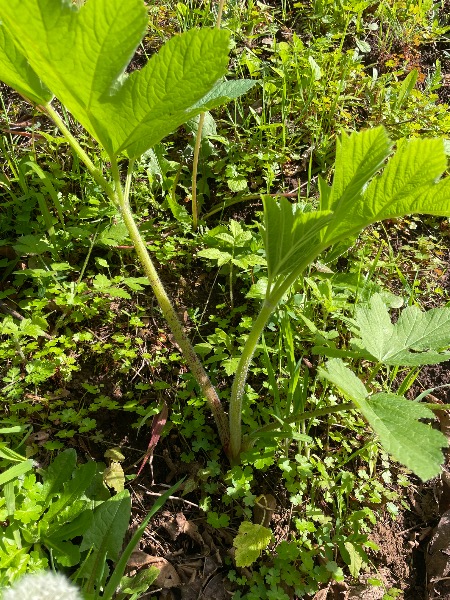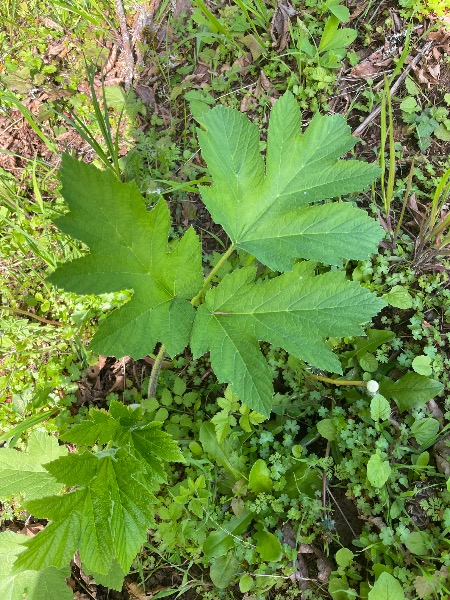Cow Parsnip (Native) on Apr 15, 2025
Submitter does not have a specimen
Description of specimen
I assume it is cow parsnip (common hog weed). Mature height no more than 6’.



Thank you for your submission and interest in managing the vegetation on your property. Cow parsnip (Heracleum maximum) is a native perennial that is often found in recently disturbed soil. Controlling this species often takes an integrated pest management approach, combining various methods of removal and prevention.
Glyphosate can be effective on young plants and new shoots but should only be used according to the product label. Plants can also be manually dug up with care taken to remove the taproot. It is not advisable to mow or weed-whack this species as the sap can cause skin irritation and burning after contact and subsequent exposure to sunlight. Cutting the flowers off the plant before they set seed can help to slow the spread of this species.
Dealing with a large infestation may look something like this. In the spring, apply herbicide (following the product label) to young plants. Follow herbicide treatment with mulching using cardboard or wood chips after the plants appear to have died back. Manually cut back the entire plant or at least the flowers of plants that were missed by herbicide treatment. In the fall, plant desired species that can compete with the cow parsnip in the treated areas. This process may take several seasons.
Jacob Argueta
April 17, 2025, 3:14 a.m.